


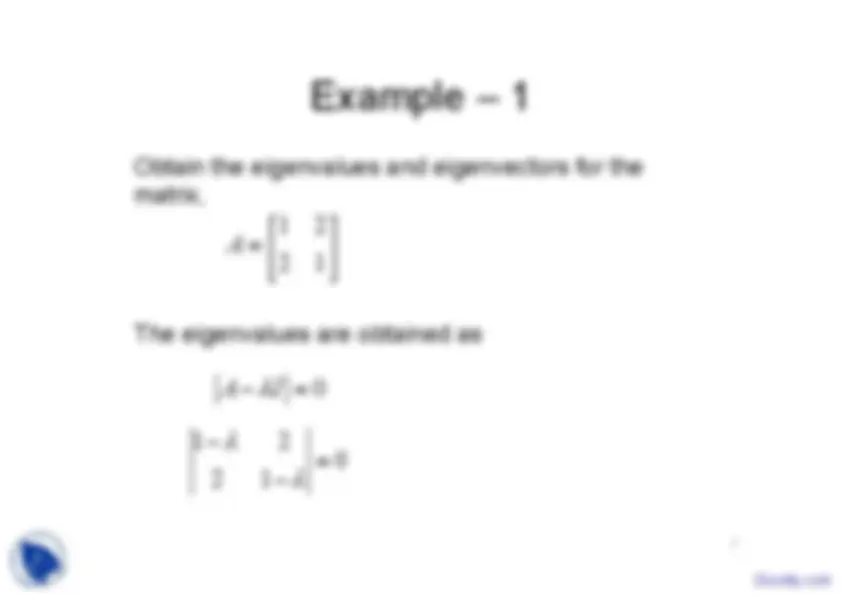
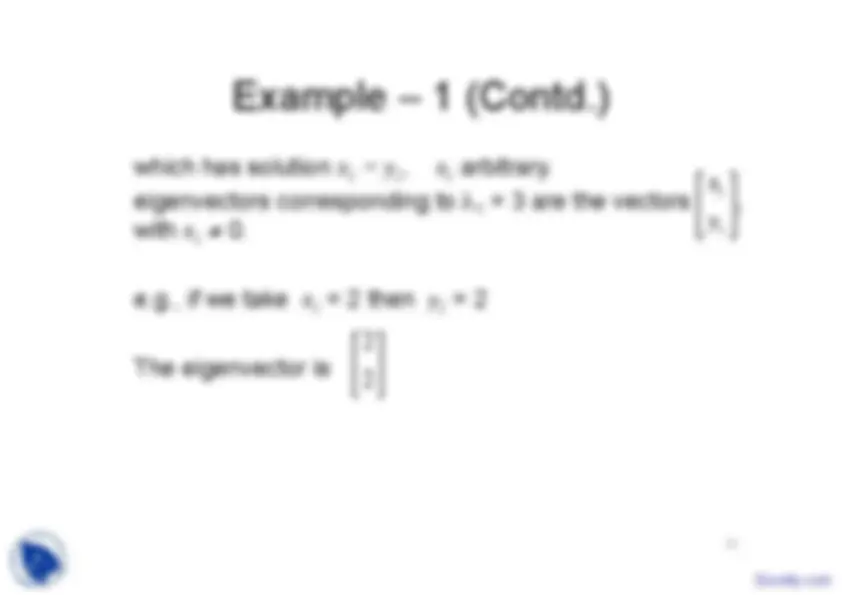
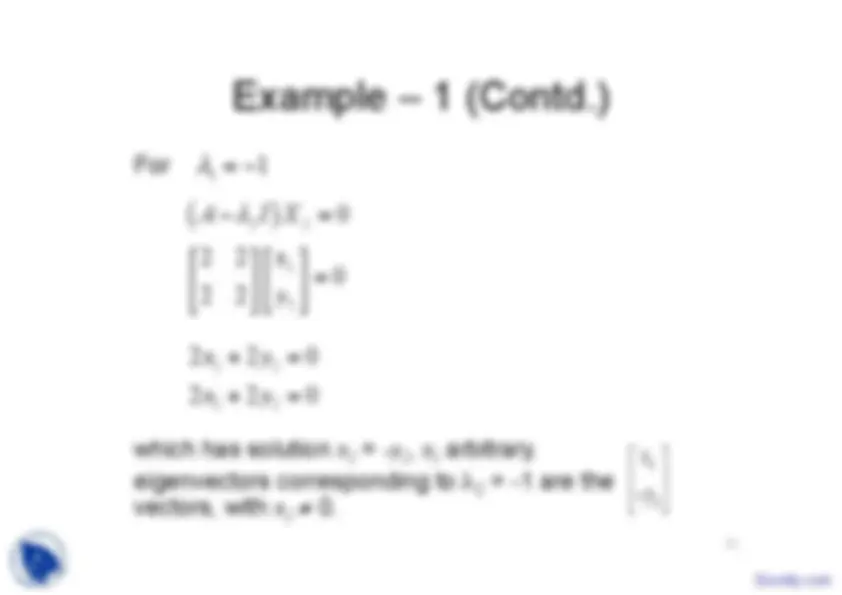
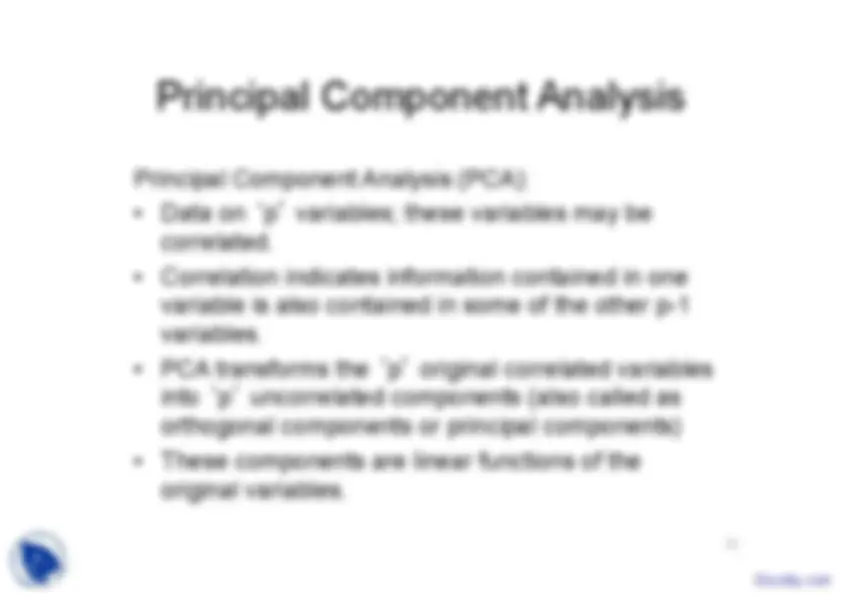
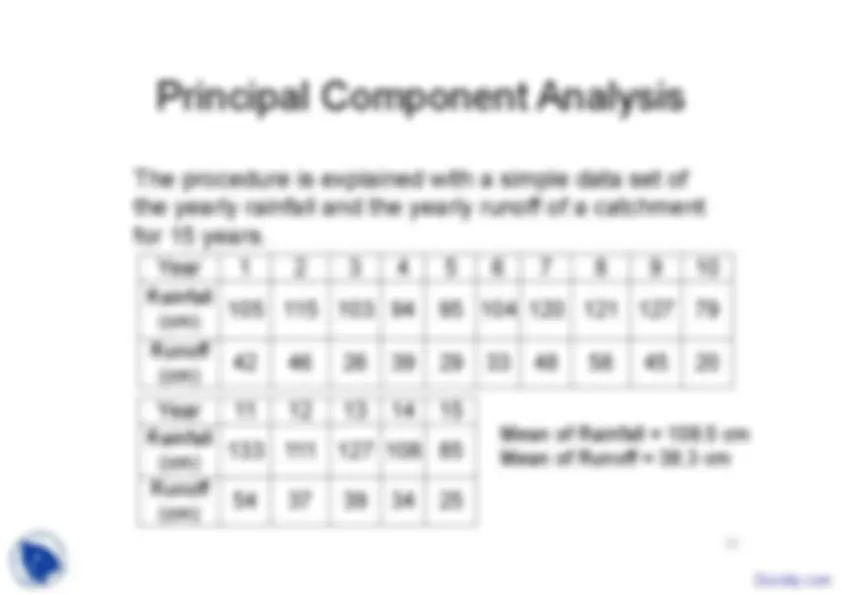
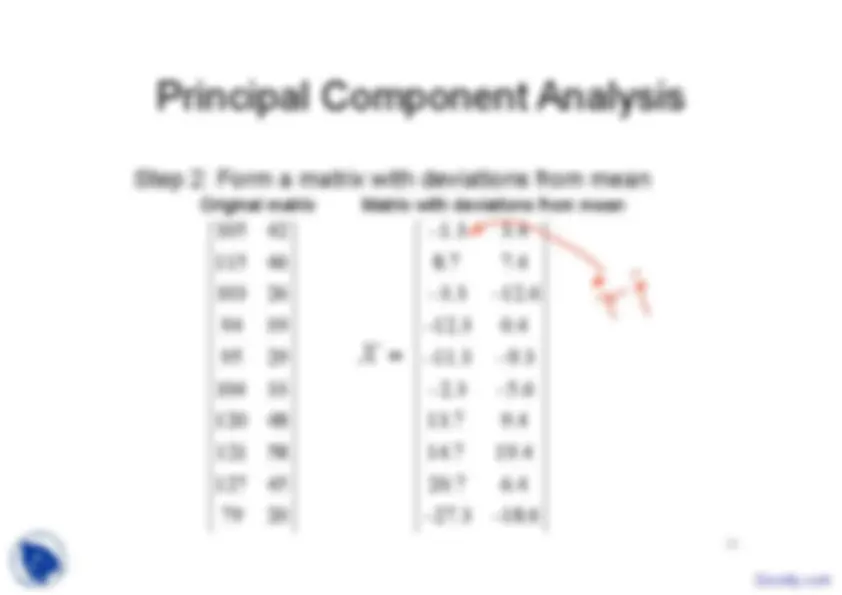
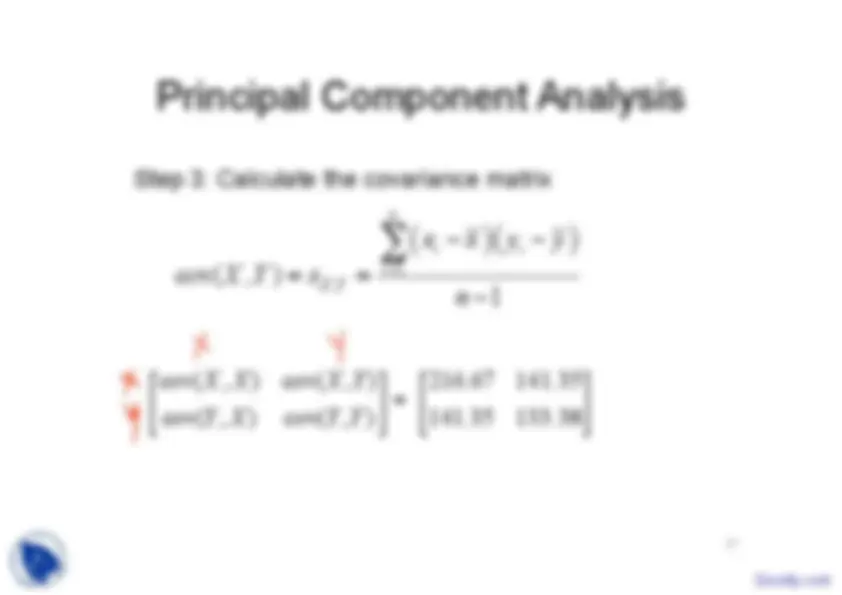
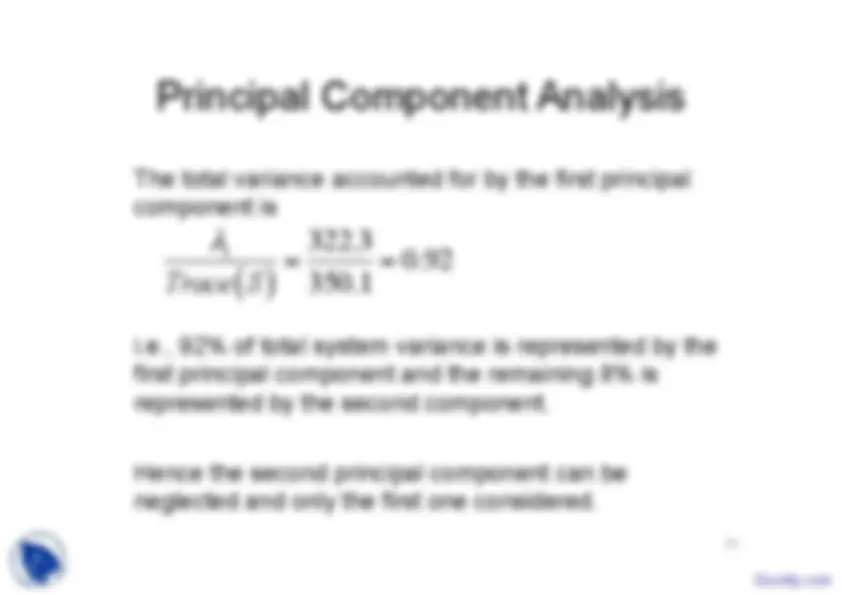
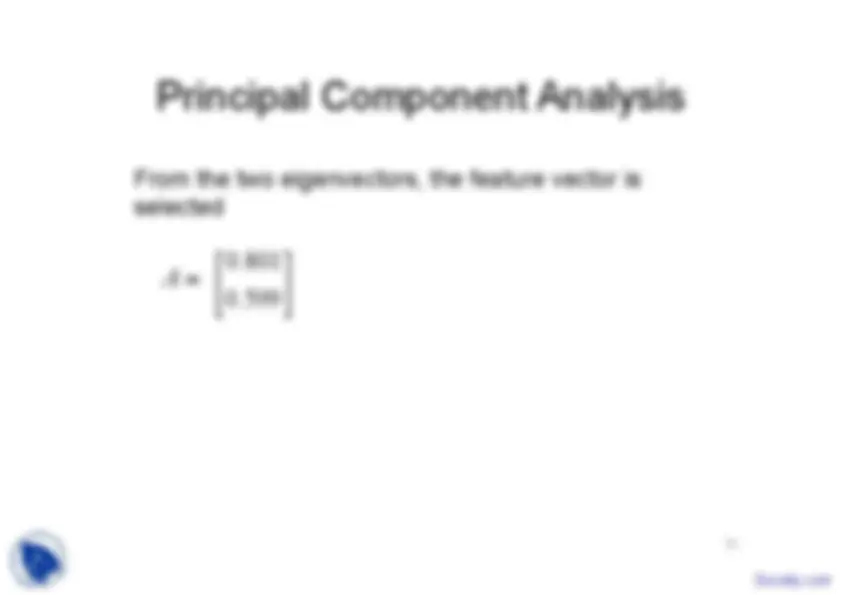
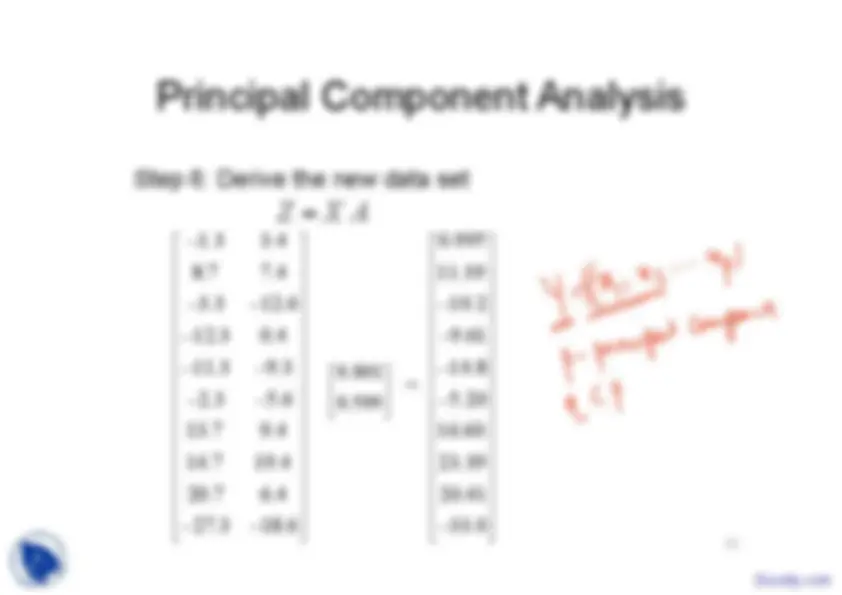
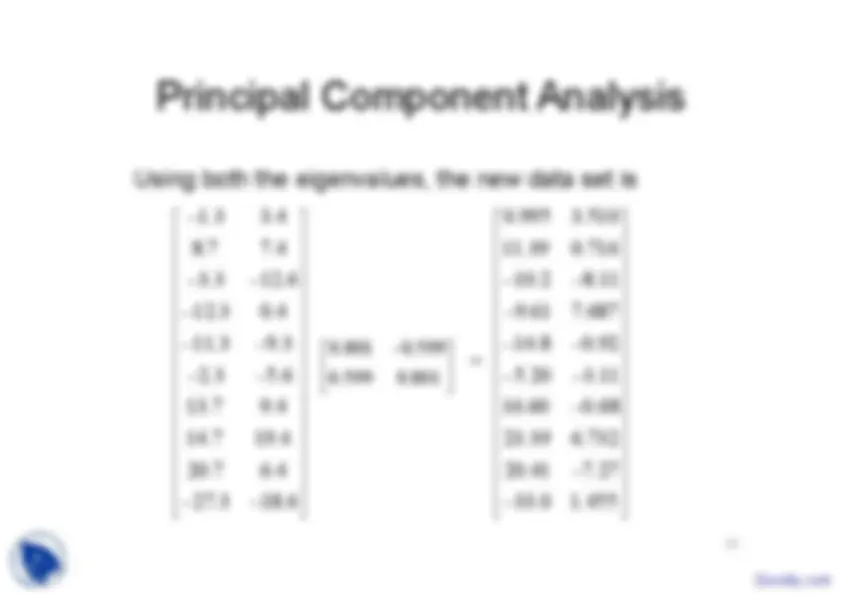

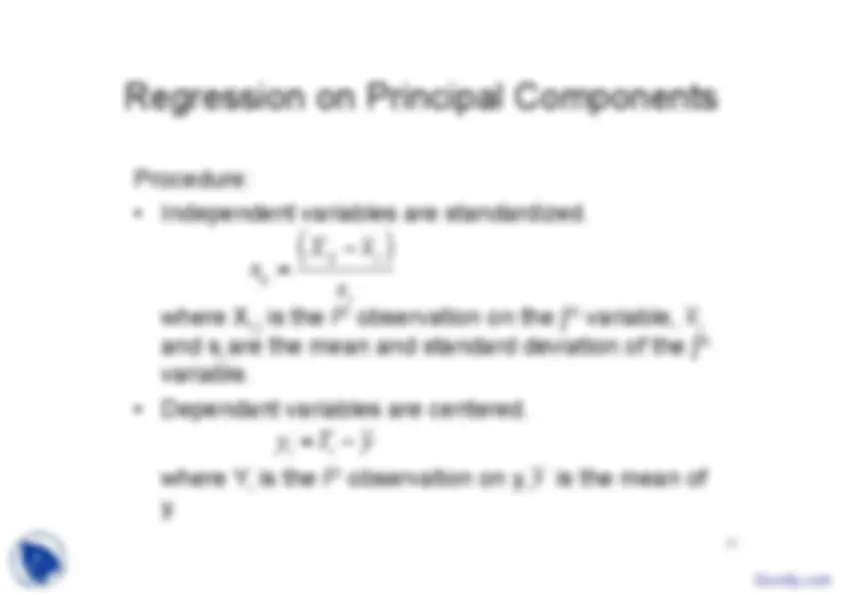
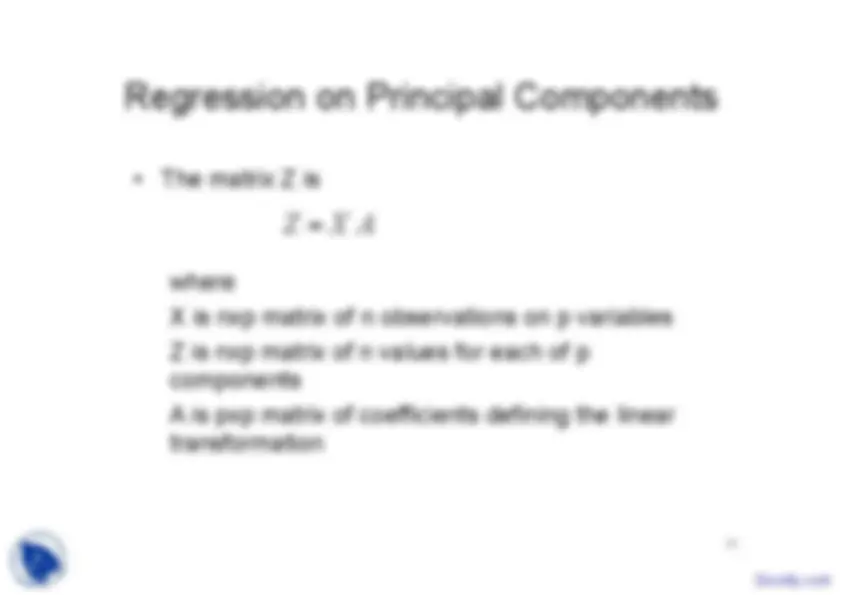
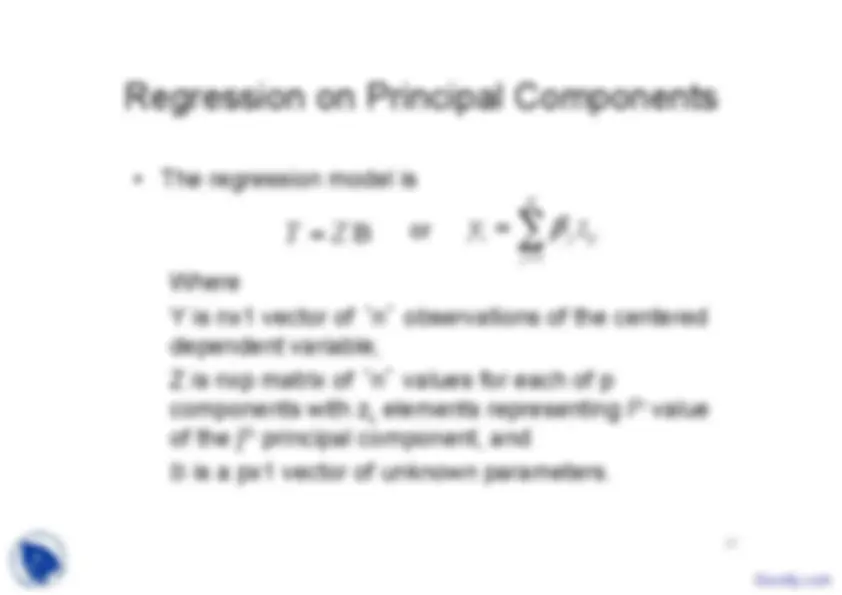

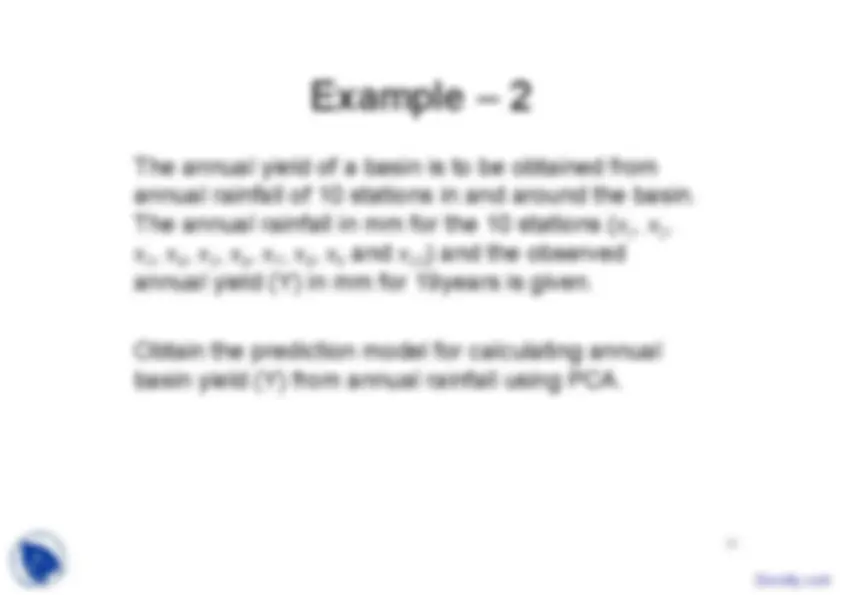

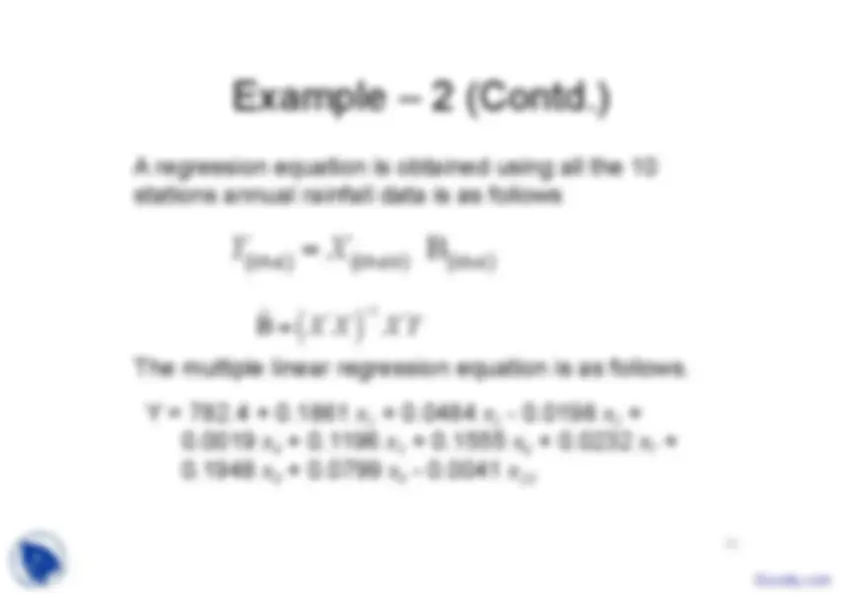
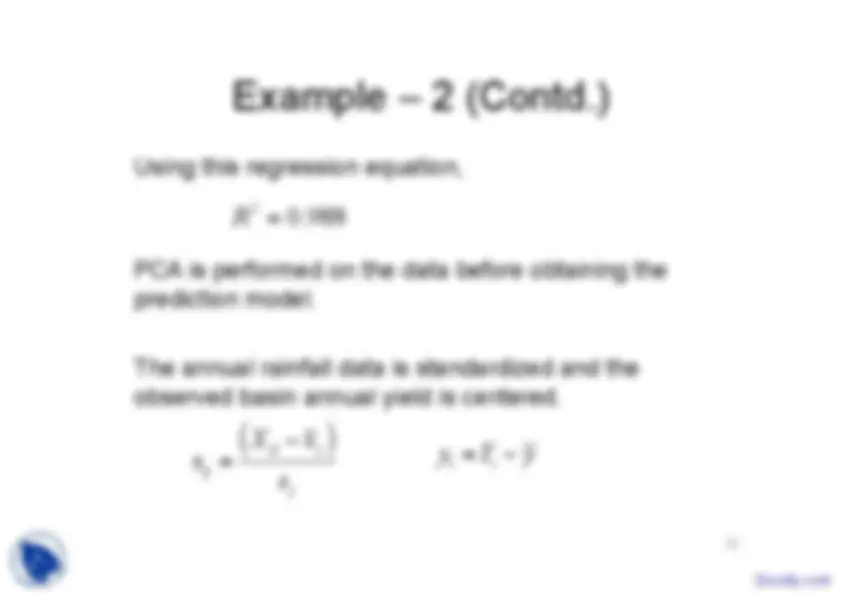
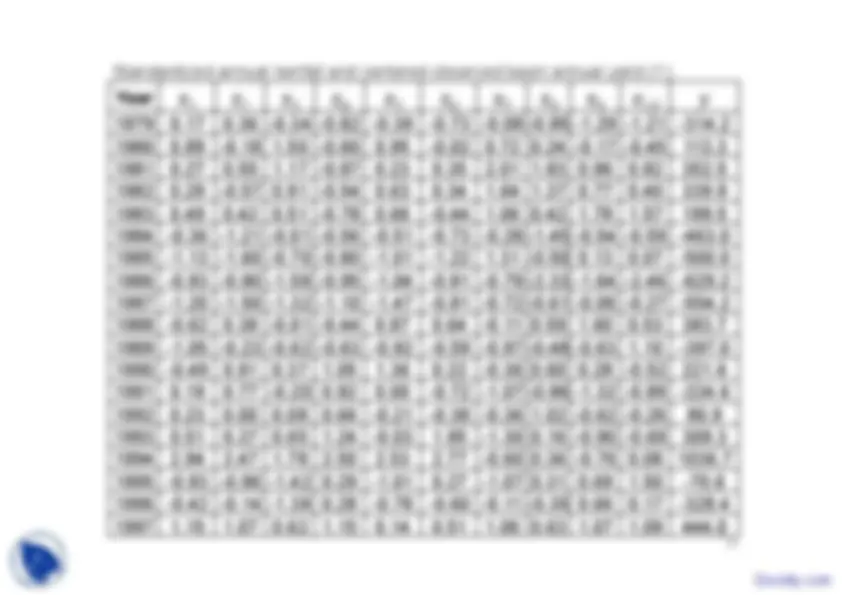
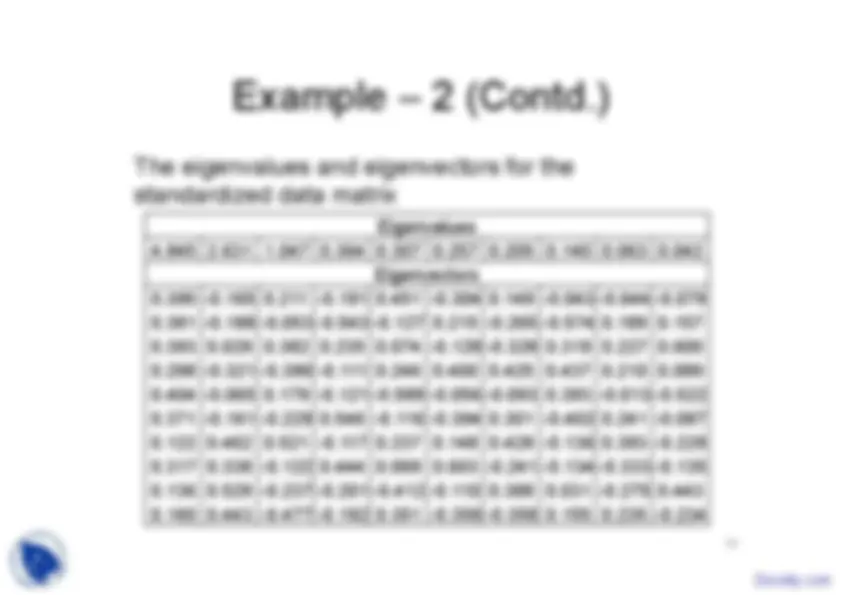
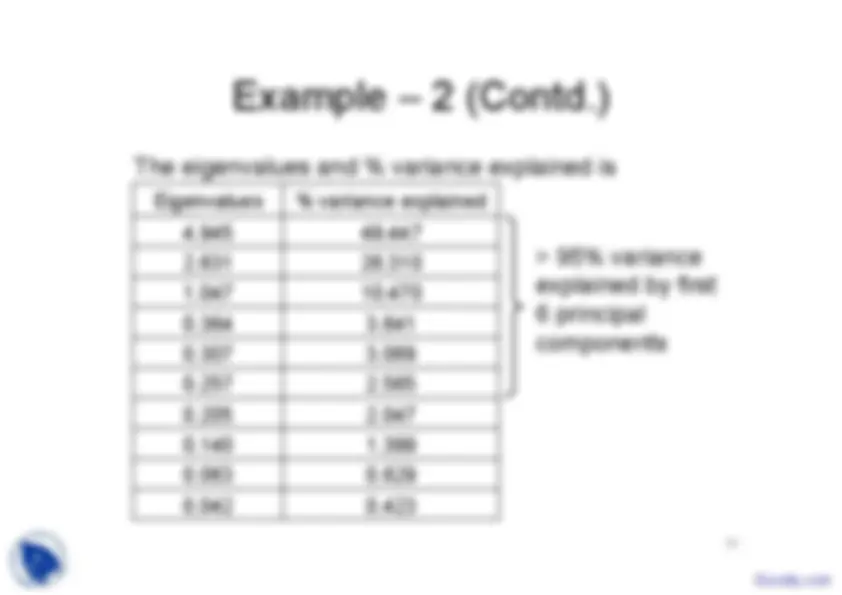
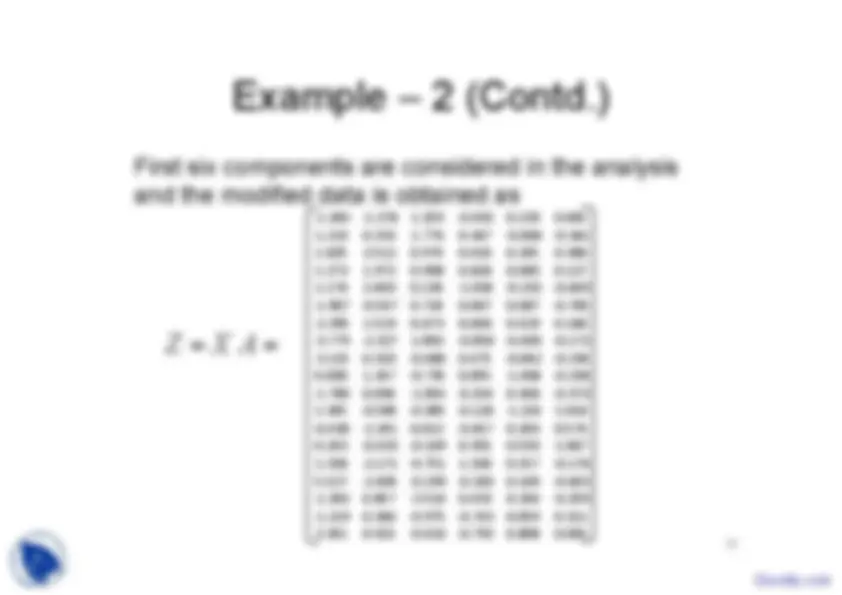
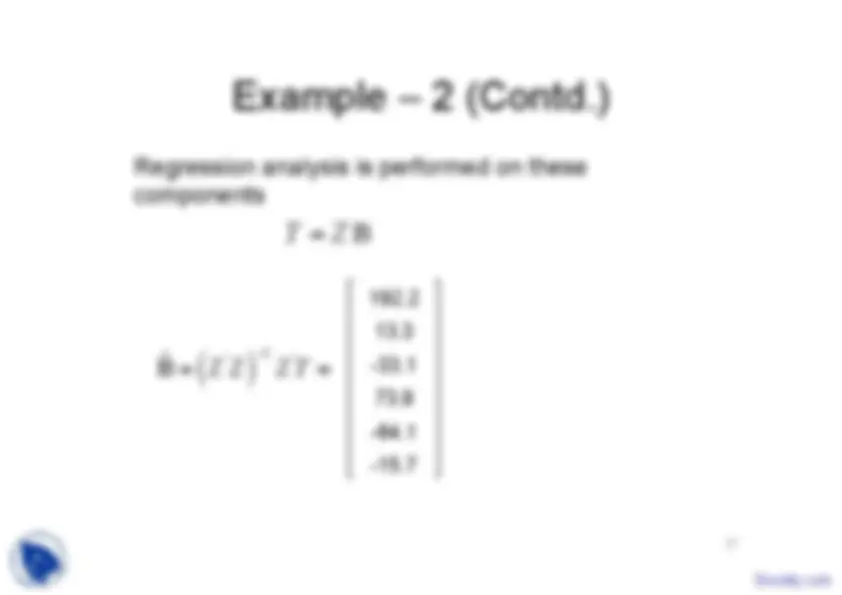
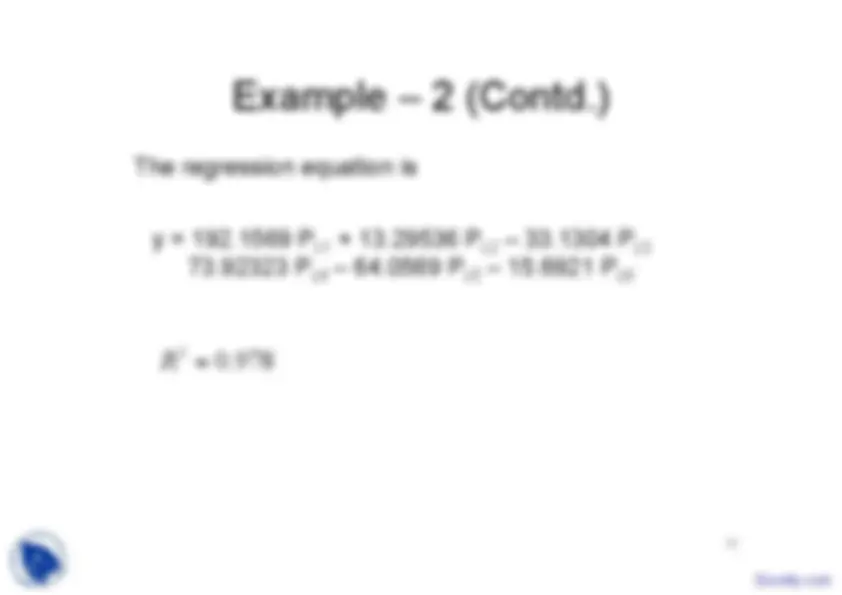
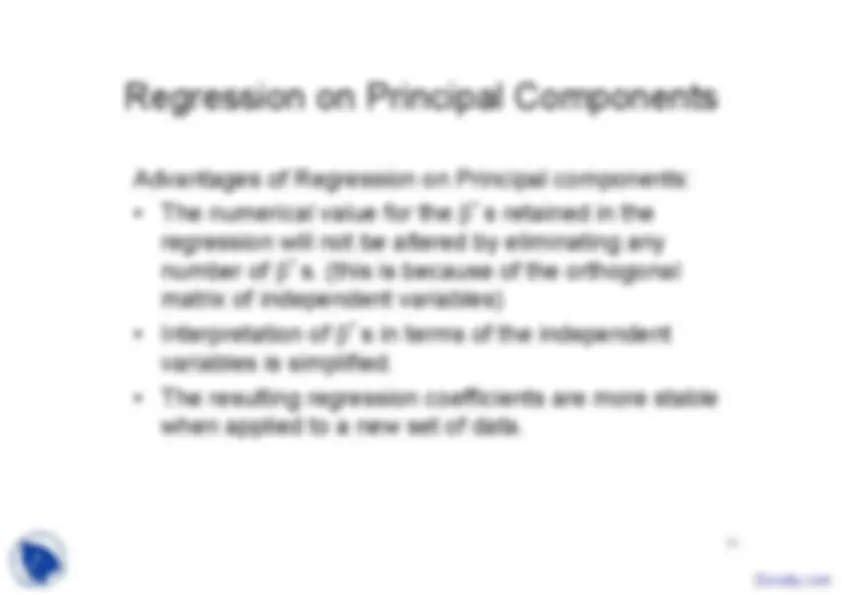




Study with the several resources on Docsity

Earn points by helping other students or get them with a premium plan


Prepare for your exams
Study with the several resources on Docsity

Earn points to download
Earn points by helping other students or get them with a premium plan
Community
Ask the community for help and clear up your study doubts
Discover the best universities in your country according to Docsity users
Free resources
Download our free guides on studying techniques, anxiety management strategies, and thesis advice from Docsity tutors
The main points i the stochastic hydrology are listed below:Principal Component Analysis, Identifying Patterns, Number of Dimensions, Matrix Algebra, Eigenvectors and Eigenvalues, Square Matrices, Non–Zero Column Vector, Matrix of Coefficients, Covariance Matrix
Typology: Study notes
1 / 39

This page cannot be seen from the preview
Don't miss anything!
































3
4
6
A − λ I = 0
7
1 2
2 1
A
⎡ ⎤
= ⎢ ⎥
⎣ ⎦
A − λ I = 0
1 2
0
2 1
λ
λ
−
=
−
9
1
λ = 3
( ) 1 1
A − λ I X = 0
1 1
1 1
2 2 0
2 2 0
x y
x y
− + =
− =
1
1
1 3 2
0
2 1 3
x
y
⎡ −^ ⎤ ⎡ ⎤
= ⎢ ⎥⎢ ⎥
− ⎣ ⎦ ⎣ ⎦
1
1
2 2
0
2 2
x
y
⎡ −^ ⎤ ⎡ ⎤
= ⎢ ⎥⎢ ⎥
− ⎣ ⎦ ⎣ ⎦
1 2
2 1
A
⎡ ⎤
= ⎢ ⎥
⎣ ⎦
1
1
1
1
1
1
1
10
1
1
x
y
⎡ ⎤
⎢ ⎥
⎣ ⎦
2
2
⎡ ⎤
⎢ ⎥
⎣ ⎦
12
13
Z = X A
15
Rainfall
(cm)
Runoff
(cm)
Rainfall
(cm)
Runoff
(cm)
Mean of Rainfall = 108.5 cm
Mean of Runoff = 38.3 cm
16
Original matrix Matrix with deviations from mean
X =
1
2
18
A − λ I = 0
( A^ −^ λ I^ ) X =^0
0.801 0.
0.599 0.
⎡ − ⎤
⎢ ⎥
⎣ ⎦
X =
th
19
j
j
21
⎡ ⎤
⎢ ⎥
⎣ ⎦
A =
22
Z = X A
⎡ ⎤
⎢ ⎥
⎣ ⎦